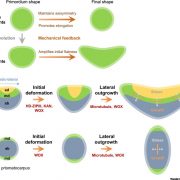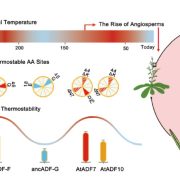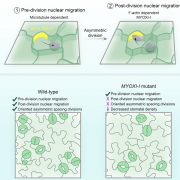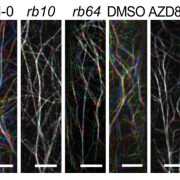Membrane pointillism: Lipid nano-patterning controls distinct molecular pathways at the plasma membrane of pollen tubes
Ingo Heilmann and Marta Fratini
Department of Plant Biochemistry, Institute of Biochemistry and Biotechnology
Martin-Luther-University Halle-Wittenberg, Halle (Saale), Germany
Background: Each living cell is surrounded by a plasma membrane, which is composed of lipids that form a hydrophobic barrier. Certain membrane lipids help control biological processes at the plasma membrane, and we demonstrate that such regulatory lipids form dot-like patterns, which guide certain physiological processes and thereby contribute to the control of overall cellular physiology. The larger cellular picture emerging from the dot-like lipid patterns is somewhat reminiscent of pointillism. Pointillism is a painting technique first developed by G. Seurat and P. Signac in 1886. The technique uses a multitude of tiny dots well-positioned all over a canvas to create a scene at a much larger-scale. When we look at the overall painting, all the dots together generate a well-defined image. However, once we look closer we can still appreciate the individual dots. Regulatory lipids in cellular membranes can also be visualized by fluorescence labeling as tiny colorful dots; by using advanced microscopy techniques the lipids are found in different patterns or in different areas. Similar to pointillism paintings, where many dots together generate a specific shape (a tree, a boat, or a face), the positions of regulatory lipids in a membrane enable coordinated physiological functions according to the patterns they create.
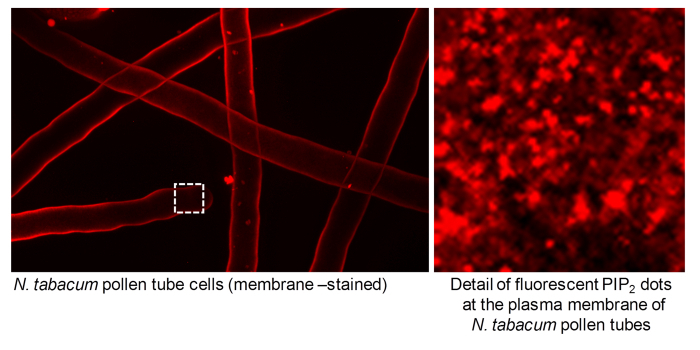 Question: We address how signaling lipids form patterns, how their distribution is regulated and which cellular functions they control.
Question: We address how signaling lipids form patterns, how their distribution is regulated and which cellular functions they control.
Findings: We studied tobacco (N. tabacum) pollen tubes whose shape relies strictly on the correct positioning of signaling lipids. We show that the important regulatory lipid phosphatidylinositol-4,5-bisphosphate (PIP2), localizes in plasma membrane dots (“nanodomains”) at the tip of pollen tubes where the cells expand. PIP2 localization in nanodomains depends on the lipid kinase PIP5K2, which also localizes in nanodomains. Both PIP2 and PIP5K2 nanodomains are dynamic and control cytoskeletal dynamics in pollen tubes.
Next steps: In the future, we aim to understand how the cytoskeleton, lipid kinases and PIP2 act together in the tip of pollen tubes and also in different other types of plant cells. We furthermore aim to elucidate the molecular mechanisms by which plasma membrane nanodomains are formed, maintained and dynamically disassembled.
Marta Fratini, Praveen Krishnamoorthy, Irene Stenzel, Mara Riechmann, Monique Matzner, Kirsten Bacia, Mareike Heilmann, Ingo Heilmann. (2021). Plasma membrane nano-organization specifies phosphoinositide effects on Rho-GTPases and actin dynamics in tobacco pollen tubes. Plant Cell. http://bit.ly/3uwYqsM



